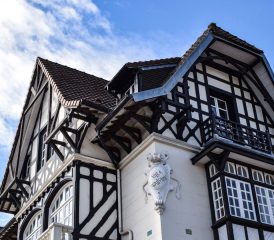In the first half of the 20th century, Le Touquet-Paris-Plage knew the torment of both World Wars. An episode that the resort still holds in its memory.
The year is 1914. At the outbreak of the First World War, while not the scene of actual fighting, the Opal Coast becomes, in 1915, England’s main supply base. British troops arrive in Montreuil-sur-Mer, among other sites, to establish their General Headquarters, while Étaples-sur-Mer hosts both a training camp and a vast sanitary zone.

A resort flying the Belgian colours
In 1915, Le Touquet became a place of rest with about 3,400 beds destined for injured soldiers. Hotels and casinos along the coast were gradually transformed into makeshift hospitals. This is how over 6,000 Belgian refugees arrived in the resort. The town of Ypres transferred its council offices here, and the local population doubled. To feed all these inhabitants, a potato field was cultivated in the municipal park which, on 30th June 1935, was renamed “Jardin d’Ypres” in memory of those unique times.

On 11th November 1918, the signing of the Armistice marked the end of the First World War and the opening of a new chapter of newfound peace. Despite the general euphoria, the transition promised to be a complex one, as four years of war had left a profound impact across the entire Opal Coast. While the first War Memorials emerged around 1919, the cemetery of Le Touquet was filled with the tombs of fallen soldiers, bearing witness to the violence of the conflict. 48 citizens and Belgian soldiers were also buried here.
The scars of the Second World War
History repeated itself in 1939. As the Second World War broke out, Le Touquet-Paris-Plage reverted to its role as a sanitary zone. But all that changed on 21st May 1940, when two German officers arrived at the Town Hall, marking the beginning of a period of occupation which was to last for 4 years.

During the Occupation, the seafront of Le Touquet became a military zone. Fearing Allied landings in Pas-de-Calais, the German army generals transformed the Opal Coast (along with the entire Atlantic coastline).
As the battle raged overhead, many of the town’s hotels and amenities were occupied and utilised by the German army. The Royal Air Force and its Allies bombarded the town, until the evacuation order was eventually given and the German soldiers were ordered to mine the entire resort, civilian sites included. Multiple iconic monuments were blown up by mines, others were destroyed by bombs.
At the Liberation, on 4th September 1944, Canadian troops arrived in the deserted town amid devastation. The press described Le Touquet as “France’s most heavily-mined town”. It took three years to clear it of mines completely, an operation bravely executed by civilians under the command of Monsieur René Béchu. In all, 92,745 mines and explosive devices were uncovered and defused across the town.
In 2017, spring tides uncovered six explosive, Rommel-stake-type devices which were eventually defused by the mine-clearing squad.







